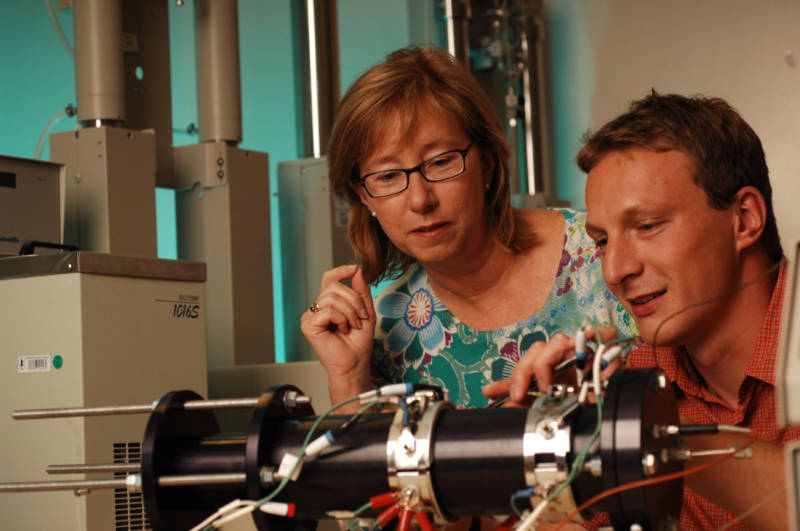Stanford study suggests that carbon dioxide “sequestration” can be part of the global warming solution.

Sally Benson and her lab crew have been giving rocks a very hard time.
The energy resources engineering professor has been heating rock to 122 degrees and subjecting it to the pressure of a hundred atmospheres — the same pressure present at a half-mile or so underground — to see how carbon dioxide would move through the microscopic nooks and crannies.
It’s a key question for energy companies pinning their hopes on “carbon capture and sequestration” (CCS) as way to mitigate the high greenhouse gas emissions from burning fossil fuels. In practical terms, that means intercepting the CO2 and pumping it underground, essentially forever.
For the past five years, the Stanford team has collected beer can-size samples from rock formations all over North America. They then inject CO2 and water into the cores and take a CT scan, watching how it moves into the tiny pores spaces between individual grains of rock.
Authors say this new study offers the most detailed information yet about how the CO2 might behave underground in particular formations of rock. Benson says what surprised the team was how variable the rock was.
“Now we understand that certain portions of the rock have small pores and other portions have big pores,” Benson told me, after her presentation at this week’s meeting of the American Geophysical Union (#AGU11). “And the areas where you have small pores, it’s really difficult to put CO2 into it, so most of the CO2 ends up in the pore spaces that are the biggest.”
So would the carbon cache leak, releasing the CO2 back into the atmosphere? That was the burning question for Benson’s colleague, graduate student Lin Zuo, who studied the relative permeability of water and CO2. The answer is “No.” When the bubbles of gas come out of solution with the water, they plug up the rock formation because of their low permeability.
It’s a burning question outside the lab, as well. Without a successful CCS technology, there may be no way to reconcile the use of fossil fuels with their high emissions of greenhouse gases.
“Today we’re about 80% dependent on fossil fuels — a lot of natural gas, a lot of coal for electricity in particular,” says Benson, who directs Stanford’s Global Climate and Energy Project. “If we want to really quickly reduce those emissions, we need carbon sequestration as another option.”
The next question, says Benson, is, “We study rocks at a very small spacial scale — a cubic millimeter — but in reality these plumes are going to be very, very large — hundreds of square kilometers, so we need to take what we have learned and figure out how we can scale it up.”
One thought on “Can Rocks Really Store Enough CO2 to Keep it Out of the Atmosphere?”
Comments are closed.

If you want Co2 out of the atmosphere then build these. They can get us to 200ppm or lower if needed! http://i149.photobucket.com/albums/s54/hurricanedude/001.jpg